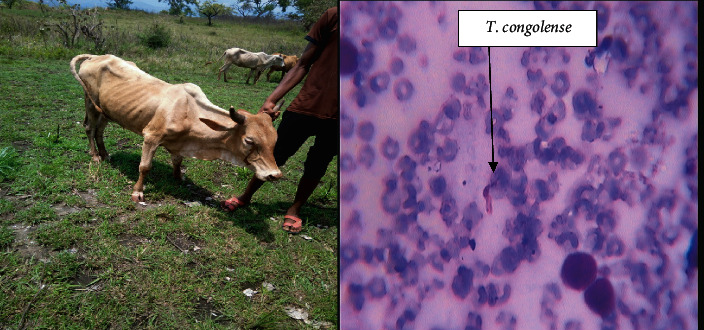New Research: Community Perception on Trypanosomosis, Parasitological, and Entomological Studies in Two Selected Districts of South Omo Zone, Ethiopia
Posted by Patricia Lumba on 06 February 2022 11:55 AM CAT


Participatory investigation and trypanosomosis prevalence studied during April 2019 and March 2020 in two selected districts of South Omo, Ethiopia. The study site is located in the gridline of 04.90 to 5.60oN and 35.80 to 36.900 E. Twelve community groups are employed. A cross-sectional study design and 288 animals bled and examined a wet film prepared from the buffy coat. Sixty NGU traps baited with acetone and cow urine were deployed for 48 hrs to estimate the apparent density. Data generated from focus group discussion and trypanosomosis prevalence analyzed using an appropriate statistical package. Proportional piling showed that cattle, goats, and sheep were proportionally dominant with a high median score of 32(14-40), 26(12-33), and 21(5-23), respectively; trypanosomosis ranked first with a proportional median score of 24(13-26) followed by contagious bovine/caprine pleuropneumonia with a proportional median score of 23(19-26) among others. Community unanimously agreed that (W = 0.9) trypanosomosis affects their socioeconomic status and was able to describe clinical signs with significant (p < 0.05) agreement. Tsetse fly (Echut and Kusubo) is the main vector with the agreement of W = 0.9(p < 0.05).
Perception on human trypanosomosis varies between Benna Tsemay and Gnagatom districts. Therefore, further study supported by laboratory like molecular test is very important to conclude the presence of human trypanosomosis in the suggested area. The overall prevalence of cattle trypanosomosis was 10.1%. The prevalence of trypanosomosis was significantly higher in poor body condition (OR = 2.1, P < 0.05) and in black coat color (OR = 13.5, P < 0.05) animals. T. congolense and T. vivax were circulating in the area. A total of 455 Glossina (385 G. pallidipes, 17 G. tachinoides, and 53 G. fuscipes) were trapped. The overall apparent density of Glossina was 3.79 Flies/Trap/Day. Three species of Glossina, namely G. pallidipes, G. tachinoides, and G. fuscipes, were distributed in the study areas. Therefore, the finding suggests that the problem is significant and the human trypanosomosis is doubtful. Hence regular control measures and molecular diagnosis need to be conducted.